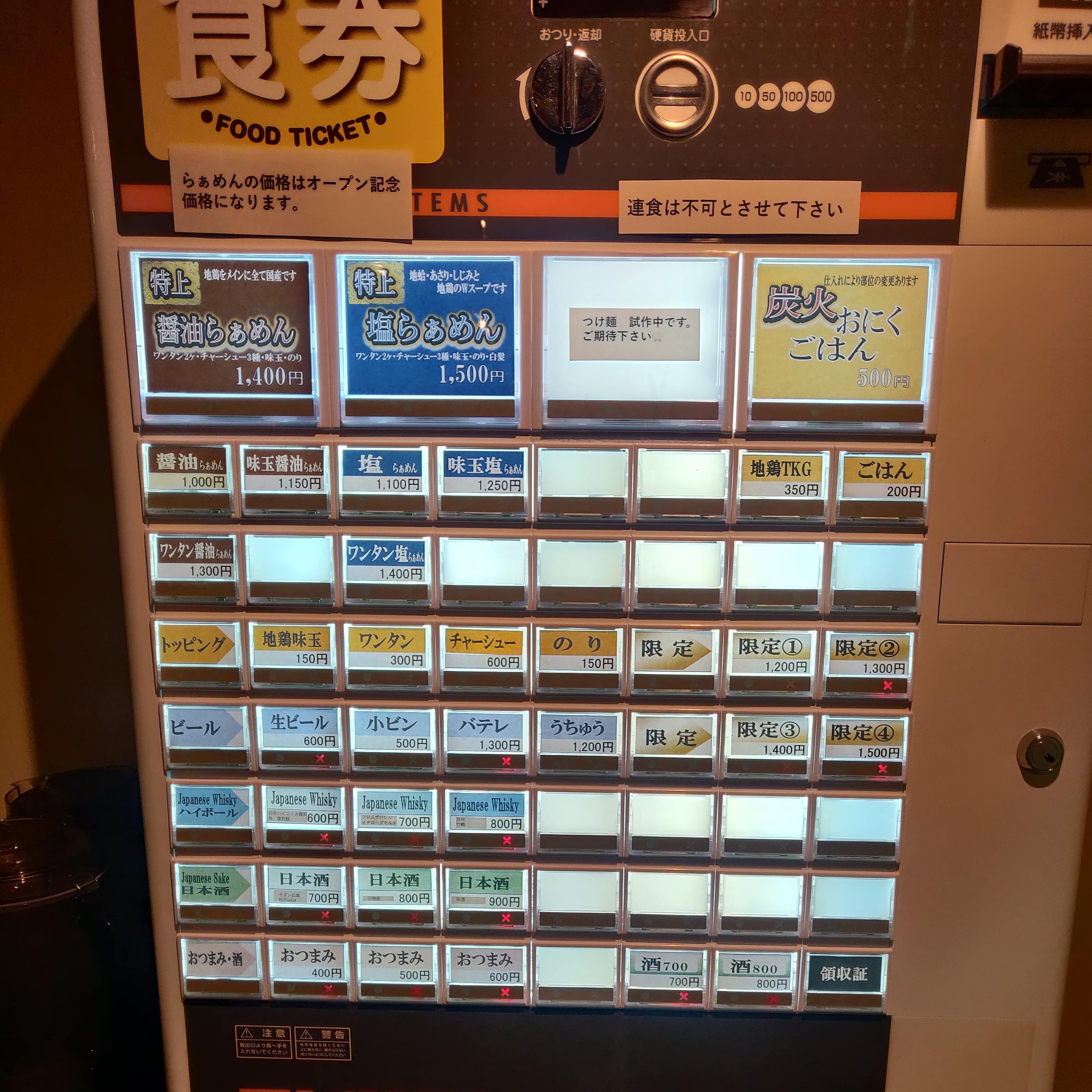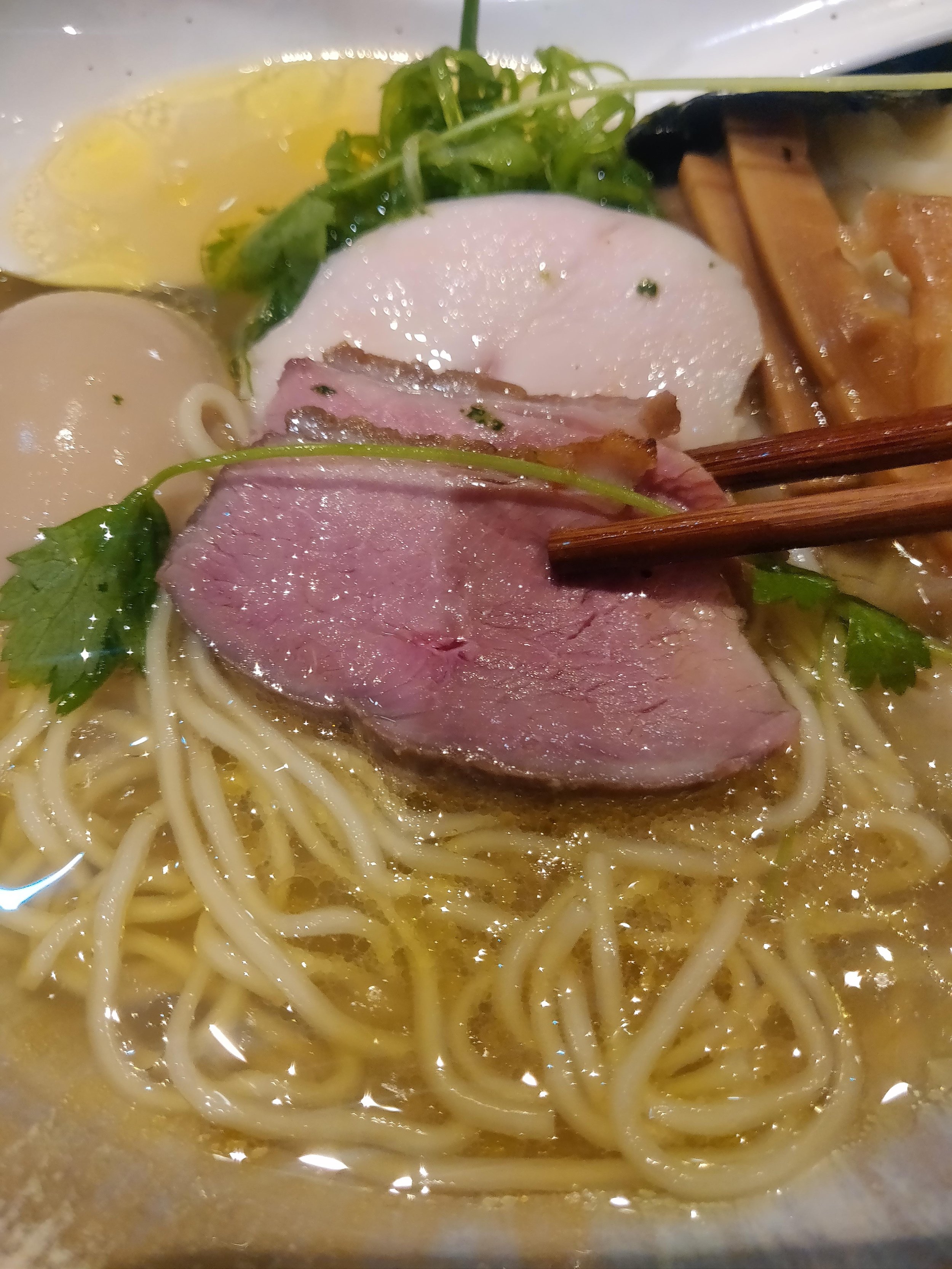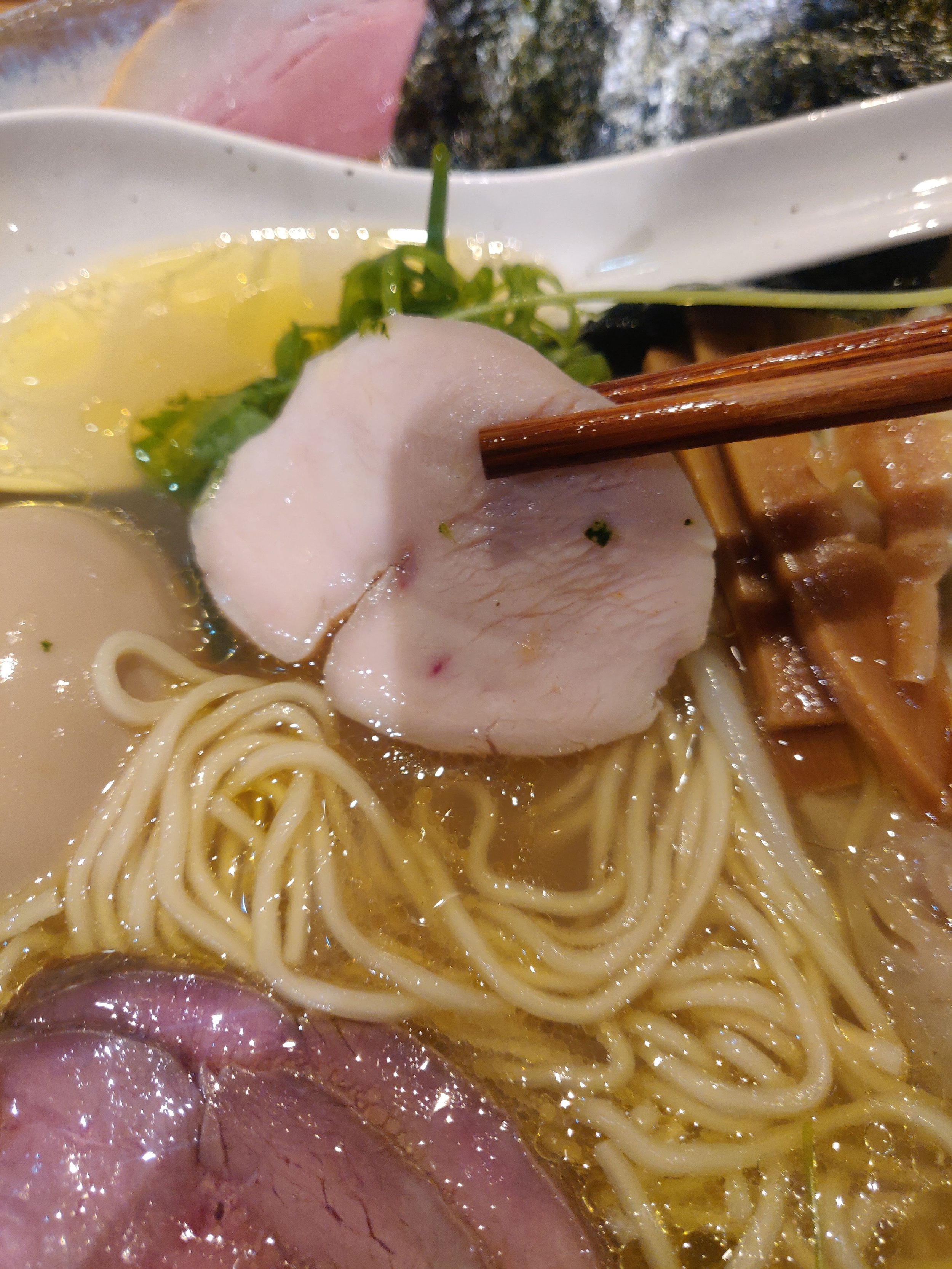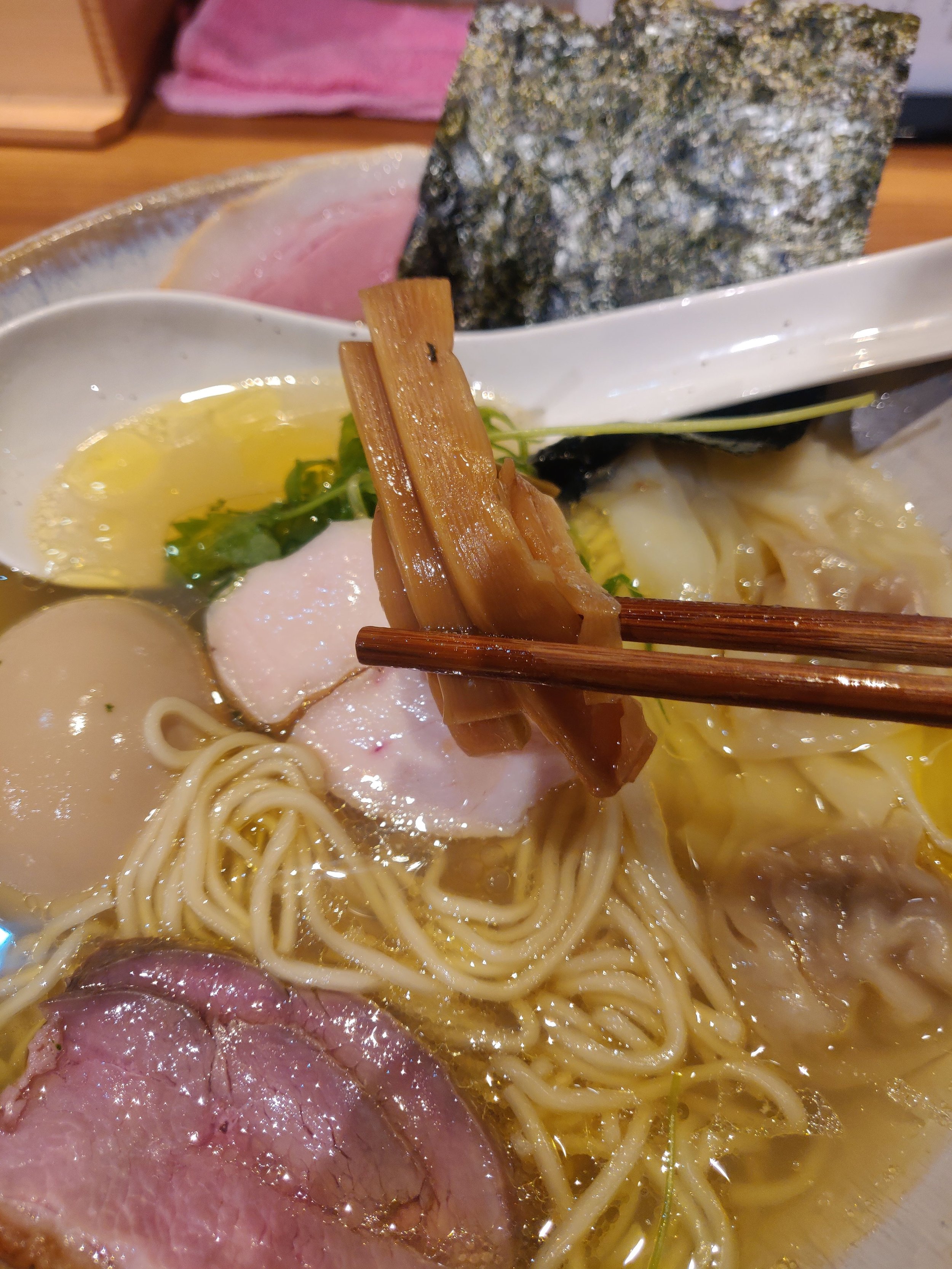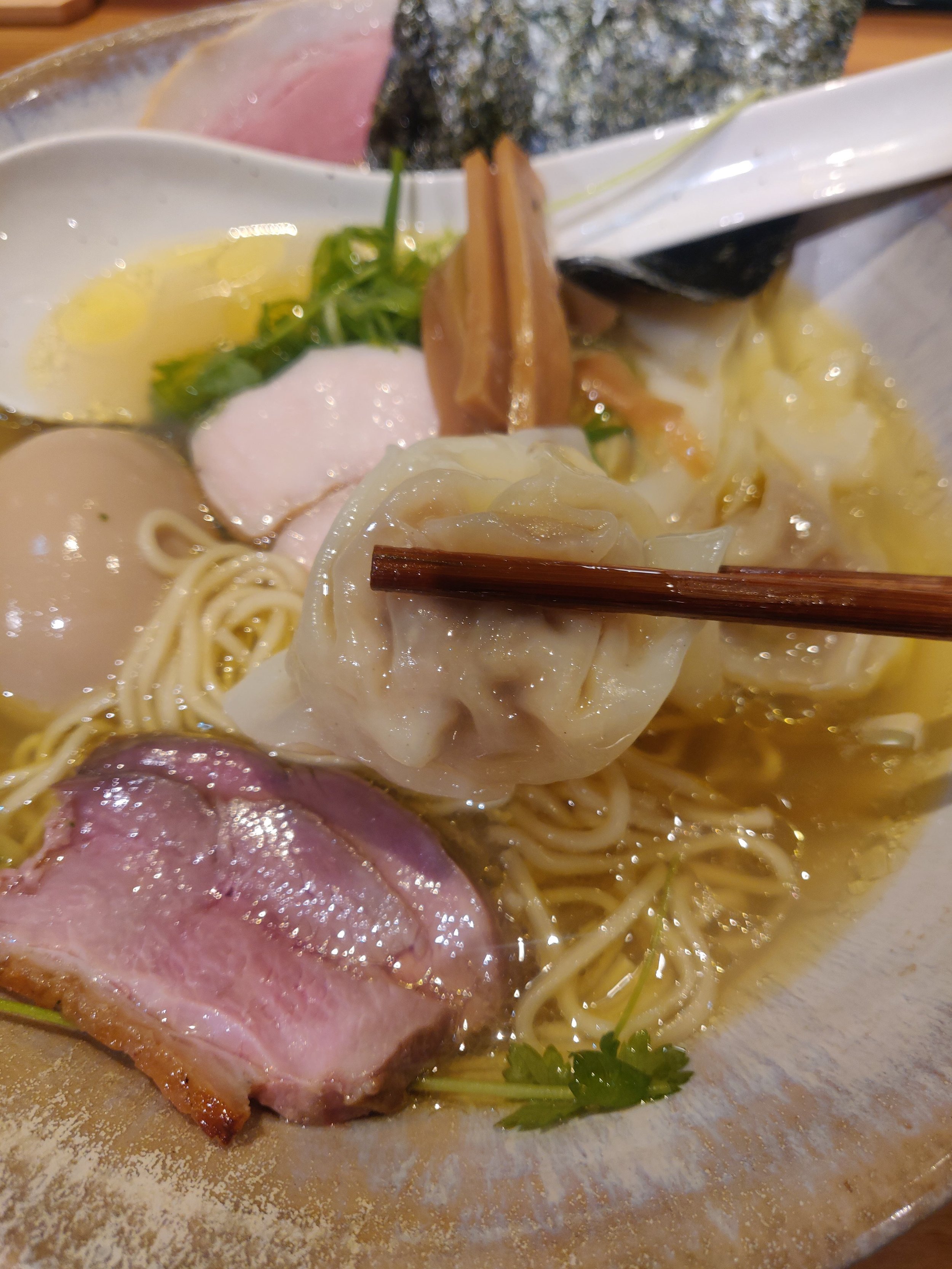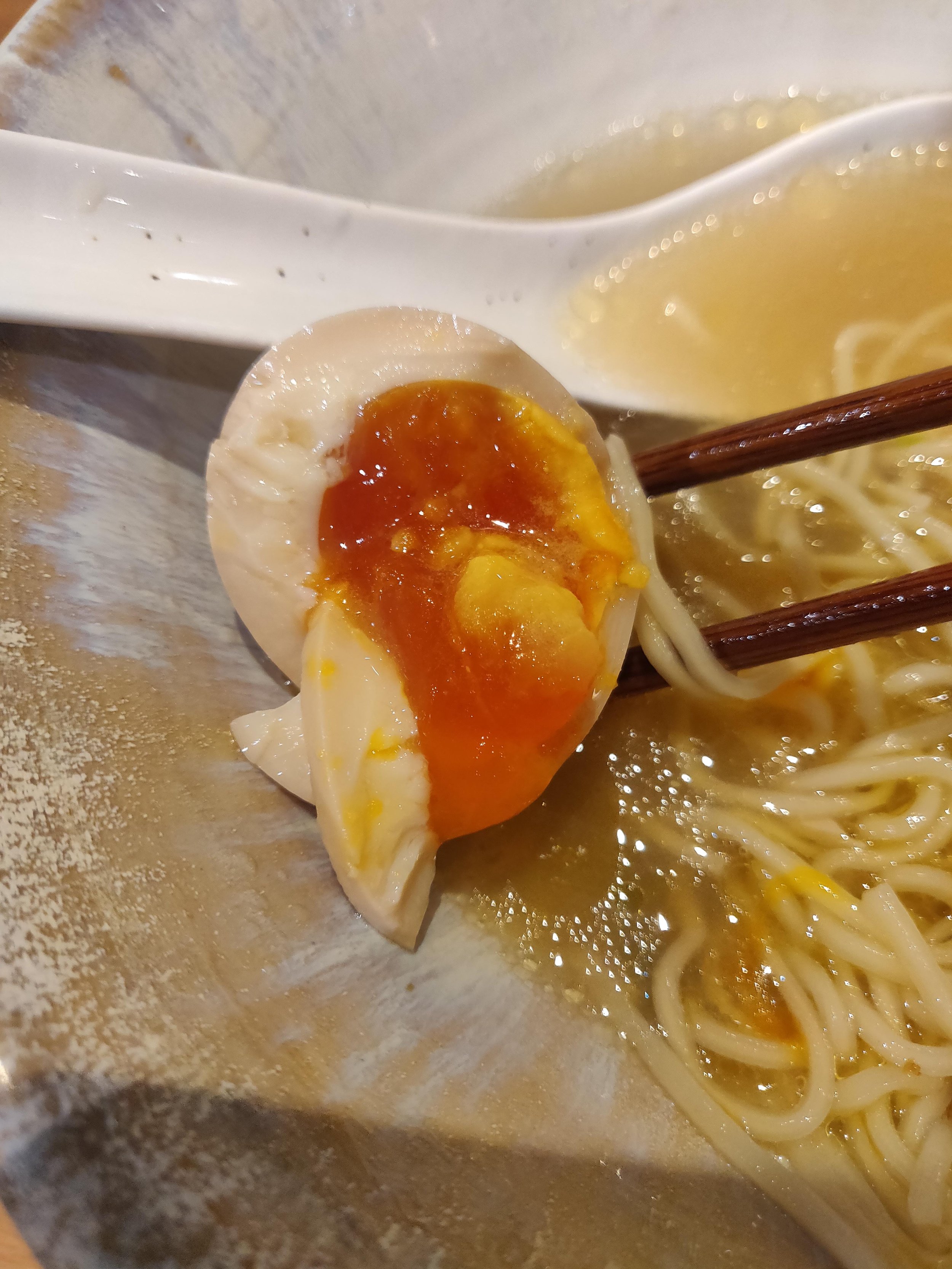Japanese Ramen Gokan (Japanese Ramen 五感): Next Michelin Star Ramen?; Ikebukuro, Tokyo
The most talked about ramen shop of 2023, Japanese Ramen Gokan has been getting some incredible hype since they opened back in April. It’s already been featured in this year’s Ramen Walker and is quickly rising up both the RamenDB and Tabelog rankings. What might intrigue a lot of tourists who frequent this blog is Gokan’s location, a mere 7 minute walk from Ikebukuro station, making it one of the most accessible shops with such prestige.
During my half assed internet research on my train ride here, I found out the master worked for the head company of Ippudo for a number of years and that the components of his ramen are inspired by the incredibly famous shops, Ramen Break Beats and Ramen Iida Shoten. After hearing rave reviews from fellow ramen heads, I finally decided to make my way there with the one and only Ramen Beast. Despite us visiting in the pouring rain, there were probably 10 or so guests in front of us when we arrived and another 30 piling behind us by the time we finally got seated. Orders are taken via the ticket machine on the right and the master prepares each bowl to order by himself so be prepared for a bit of a wait.
Ticket machine is unfortunately all in Japanese so I’ll go ahead and briefly translate the important parts here. The top row are the Tokujo, or the full topping option of the Shoyu on the left in brown and Shio on the right in blue. The yellow button on the far right is the Sumibi Oniku Gohan which is a rice bowl topped with charcoal grilled chashu. Second row is the regular ramen on the left and one with Ajitama on the right, the colors of which indicate either Shoyu or Shio. On the far right in yellow is a TKG, or raw egg over rice, on the left and plain rice on the right. Third row is for ramen with wontons. Fourth row are toppings starting with an Ajitama soft boiled egg, wontons, chashu, and nori dried seaweed. To the right of those are the limited gentei options which should be highlighted on a poster near the ticket machine. Fifth row is beer, sixth is a whisky highball, seventh is Japanese sake, and the final row are appetizers. I was tempted by the charcoal grilled chashu over rice, but opted just to get the Tokujo Shio Ramen.
About 10 minutes after sitting, my beautiful bowl was ready and right off the bat I was drawn by this gorgeous color on the soup. The golden hue comes from their generous use of chiyu chicken aroma oil and it sits atop the soup which is a W (double) broth of chicken and shellfish. The chicken broth is used for the shoyu version as well and is comprised of prime Nagoya Cochin, Iwate raised Iwaidori, Tottori Daisan, and a Mitsusedori. You read that right, in just the chicken stock alone, four varieties of chicken are used. Before serving, this broth is then mixed with a separate shellfish based stock which is comprised of Chiba Hamaguri, Hokkaido Asari, Ibaraki Shijimi, and Hotate scallops. Of course the shellfish broth is prepared separately as the heat needed to extract maximum flavors from chicken and shellfish are vastly different and the master insures the best of both worlds can be enjoyed here. A small ladle of a salt based shio tare bring the two stocks together and it’s definitely one of the most refined, decadent soups I’ve ever had. You’re immediately gonna taste the oiliness of the chicken and chiyu, but as you work your way through the bowl, you’ll find yourself puckering and tasting the intense brininess of the shellfish. I’m with you in thinking this was just another trendy shop throwing as much brand name ingredients in as possible at first, but the level of care and the perfect balance you experience with this bowl is top notch making each component seem like it has a purpose in this meticulously constructed meal.
Noodles are brought in from a local producer and has a great snappy bite to them. I would say this was the most “normal” part of the ramen, but it’s perfect for the bowl as anything with more character would have taken away from the beauty of this elegant soup. I thought the thin cut provided a sufficient slurping experience and this soup cling was just enough where I got to taste the perfect amount of delicious soup with each bite. Texture wise it was a nice compliment to the toppings providing a sort of ying and yang of snappy and chewy with the chashu slices.
Speaking of which the Tokujo comes with a couple slices of duck, thin slice of pork chashu, a succulent chicken, wontons, menma, ajitama egg, nori dried seaweed, and kujo negi, all of which are made using domestic, Japan raised ingredients. I’m kinda shocked at this level of dedication right down to each individual topping, but goes to show why they are deserving of all their hype. As an example, you can read some of my old reviews and know I’m not the biggest fan of duck in ramen. I find them to be either too game-y or super chewy and distracts from the soup and noodles. Gokan however has opened my eyes to what duck can be and it was definitely my favorite of the toppings. The sort of smokiness and peppery crust reminded me of pastrami, but the rare cook gave off some roast beef vibes. Have to give a nod to the Ajitama egg as well which had a delicious, sake flavor mixed in to the shoyu based marinade. Everything was top class, but the egg and duck definitely rose above the rest.
So is it worth the hype? I believe so, but I’m not entirely convinced it’s worth the wait for a non ramen head. If you’re a local ramen fanatic like myself, definitely make a visit…pair it with errands in Ikebukuro and have yourself a day out there (I myself went back to back with a top 100 burger shops this day). However, if you only have a short time here in Tokyo, waiting 1-2 hours for a bowl of ramen still doesn’t seem like the best use of a vacation. I feel too bad making that decision, but I will say, it’s easier than Hachigo and Nakiryu and I dare say on a similar level. If you decide it’s worth it, bring a book or a fully charged phone to help endure the wait!

